Using context in Odoo
In Odoo ERP, the proper utilisation of context is crucial for ensuring accurate and efficient data processing. However, harnessing context safely can be challenging. In this article, we will explore the best practices and pitfalls to avoid when working with context in Odoo, enabling you to leverage this powerful feature to its fullest potential while minimising the risks.When using context in Odoo, there are several best practices to follow to ensure effective usage and avoid potential pitfalls. Here are some recommendations:
Best practices to use context in Odoo
1. Understand the purpose
A context is a dictionary that holds key-value pairs and is used to pass information between different methods or models in Odoo. It provides a way to filter or modify data based on specific conditions. Before using context, clearly define the purpose and the specific data you want to pass.
Here's an example code snippet that demonstrates the usage of context in Odoo:
2. Keep it minimal
Avoid cluttering the context with unnecessary data. Include only the essential information required for the current operation or computation. Keeping the context minimal improves code readability and performance.
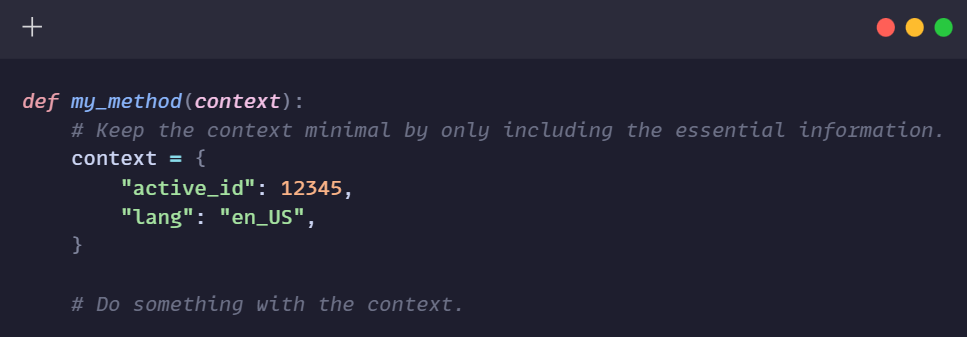
In this example, the
context dictionary only includes the active_id and lang keys. These keys are
essential for the my_method() method to function properly. Including
unnecessary keys in the context can clutter the code and make it less readable.
3. Use meaningful keys
Choose meaningful and descriptive keys for the
context dictionary. This makes it easier to understand the purpose of each key
and promotes code maintainability.
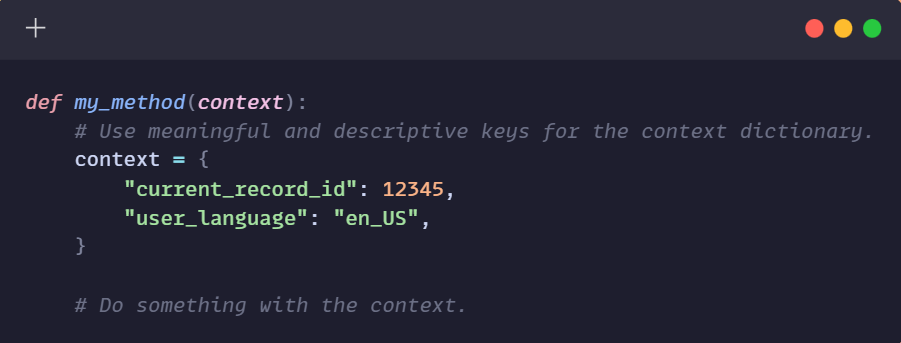
In this example, the
keys current_record_id and user_language are meaningful and descriptive. These
keys make it easy to understand the purpose of each key in the context
dictionary.
4. Document context usage
Document the purpose
and usage of the context in the code or module documentation. This helps other
developers understand how to use the context correctly and prevents misuse or
confusion.
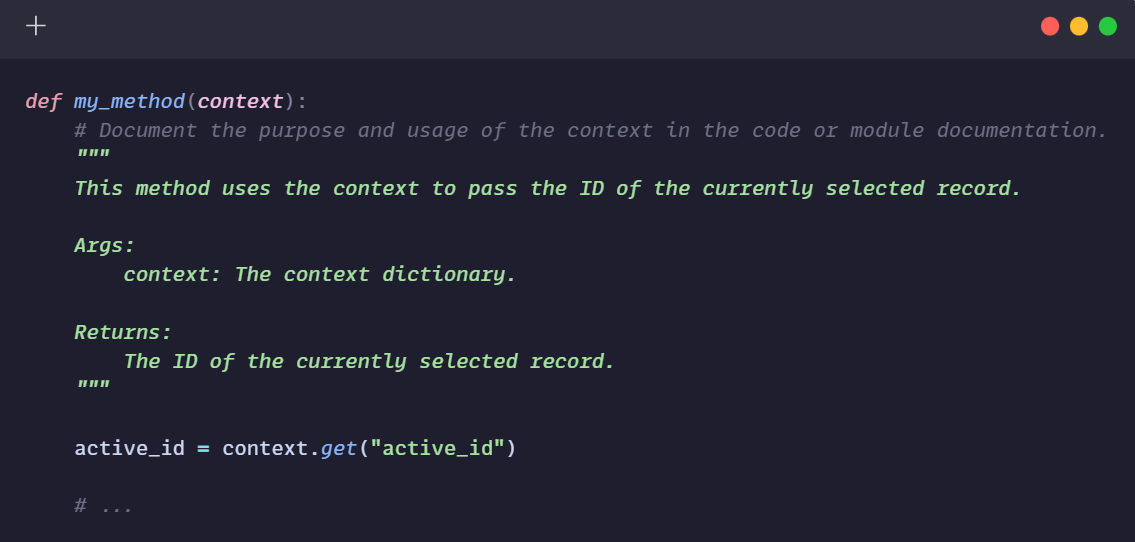
In this example, the
documentation for the my_method() method explains the purpose of the context
and how it is used. This documentation helps other developers understand how to
use the method correctly.
5. Follow Odoo conventions
Odoo has some
predefined context keys that have specific meanings. For example, 'active_id',
'active_model', and 'active_ids' are commonly used to refer to the current
active record, active model, and list of active record IDs, respectively.
Follow the Odoo conventions for using these predefined keys to ensure
consistency and compatibility with other modules.
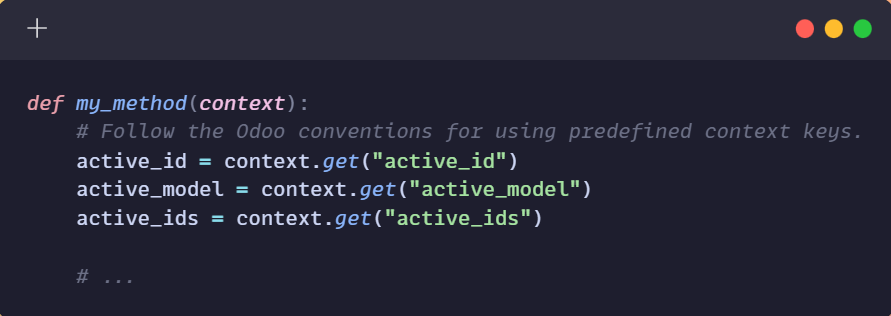
In this example, the
my_method() method uses the predefined context keys active_id, active_model,
and active_ids. These keys are commonly used to refer to the current active
record, active model, and list of active record IDs, respectively. By following
the Odoo conventions, the code is more consistent and compatible with other
modules.
6. Understand context propagation
Context is propagated
through method calls and model interactions. Be aware of how the context is
passed between different methods and models to ensure that the required data is
available when needed.

In this example, the
my_method() method understands how the context is passed between different
methods and models. This understanding helps the code to be more robust and
reliable.
7. Test and validate
Test your code
thoroughly to ensure that the context is correctly used and produces the
desired results. Validate the behavior of your code under different scenarios
and edge cases to identify any unexpected behavior or errors.

In this example, the
my_method() method is tested and validated to ensure that the context is
correctly used and produces the desired results. This testing helps to ensure
that the code is reliable and bug-free.
8. Limit context modification
Avoid modifying the
context excessively or inappropriately within a single method or model.
Frequent modifications can make the code harder to understand, maintain, and debug.
Additionally, excessive context modifications can introduce unexpected side
effects and make the code error-prone. Instead, consider using separate methods
or models to handle different aspects of data manipulation and keep context
modifications focused and minimal.
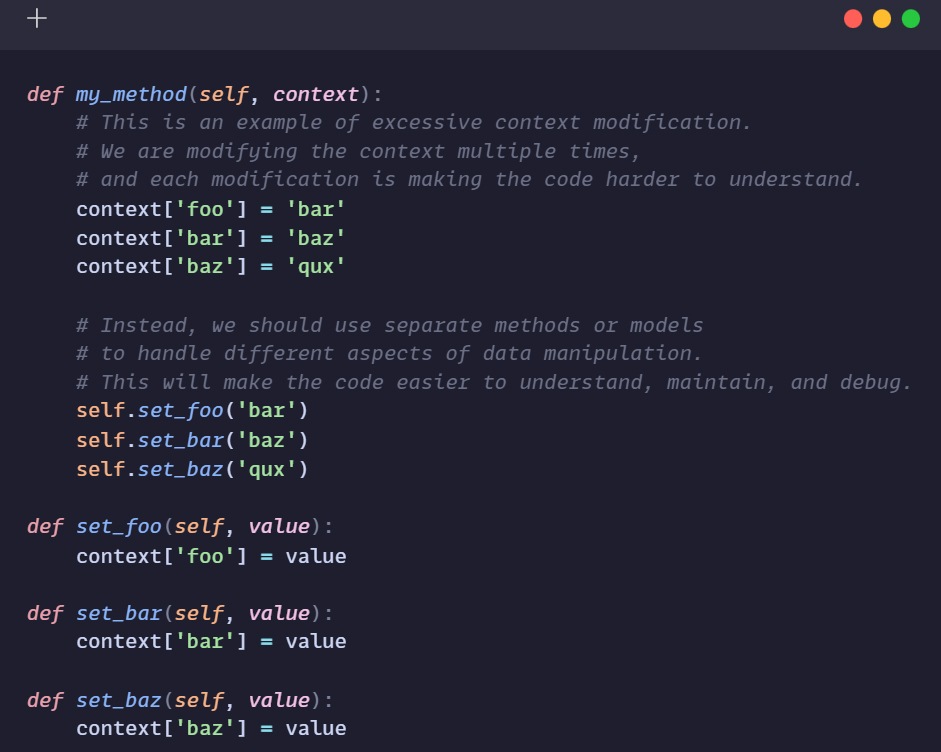
The first method, my_method(), is an example of excessive context modification. We are modifying the context multiple times, and each modification is making the code harder to understand. For example, it is not clear why we are setting context['foo'], context['bar'], and context['baz'] to different values.
The second method, set_foo(), is a better way to handle the modification of the context. This method is more focused and minimal, and it makes the code easier to understand.
The third and fourth methods, set_bar() and set_baz() are also better ways to handle the modification of the context. These methods are also more focused and minimal, and they make the code easier to understand.
In general, it is best to avoid excessive context modification. Instead, you should use separate methods or models to handle different aspects of data manipulation. This will make your code easier to understand, maintain, and debug.
Pitfalls to avoid when using context in Odoo
1. Bypassing security
Never bypass or ignore security measures by relying solely on the context. Context should not be used as a means to bypass Odoo's access rights and security rules. Always respect the security mechanisms built into Odoo, such as record rules and access controls, to ensure data integrity and protect sensitive information. Relying solely on context for security-related decisions can lead to unauthorized access or data manipulation, posing a significant security risk.
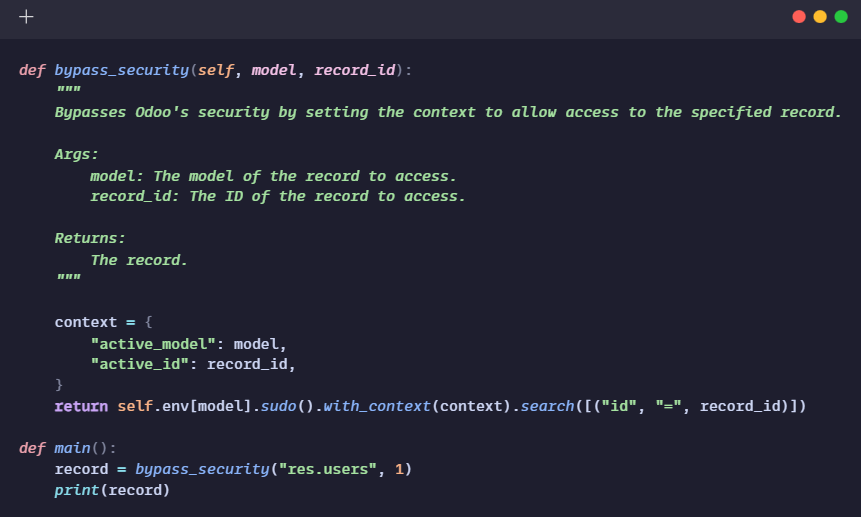
2. Overusing context
Never bypass or ignore security measures by relying solely on the context. Context should not be used as a means to bypass Odoo's access rights and security rules. Always respect the security mechanisms built into Odoo, such as record rules and access controls, to ensure data integrity and protect sensitive information. Relying solely on context for security-related decisions can lead to unauthorized access or data manipulation, posing a significant security risk.
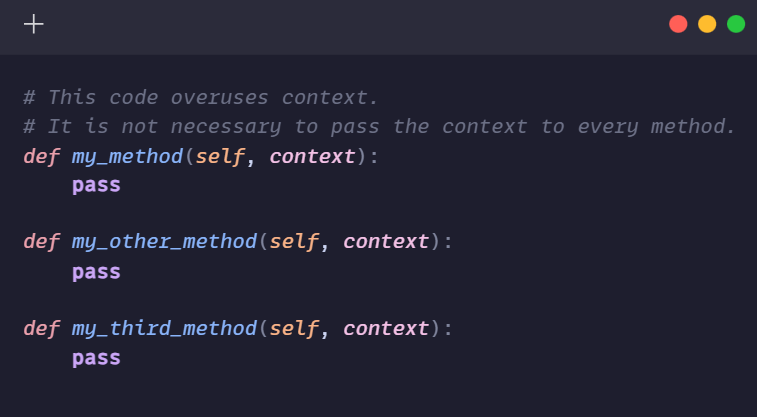
3. Conflicting context
Be cautious when
multiple methods or models interact and share the same context. Inconsistent or
conflicting context keys can result in unexpected behavior or incorrect data
manipulation. Ensure that the keys used in the context are well-documented and
understood by all developers involved.
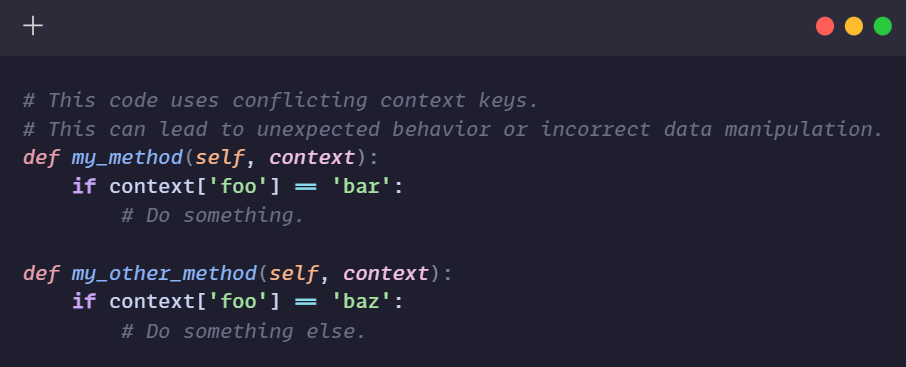
4. Security risks
Avoid storing
sensitive or confidential information in the context, as it can be accessed by
other parts of the system. Context data is accessible to all methods and models
involved in the call chain, so be cautious about what information you include.

5. Lack of documentation
Failing to document
the usage and purpose of context can lead to confusion for other developers
working on the codebase. Documenting the context keys, their meanings, and any
specific conventions followed will help ensure consistent usage across the
project.

6. Not considering performance
Including unnecessary
data in the context can negatively impact system performance, especially when
dealing with large datasets. Be mindful of the data you include and evaluate
the performance implications.

By following these best practices and avoiding common pitfalls, you can effectively use context in Odoo to pass and manipulate data, improving the functionality and maintainability of your code.